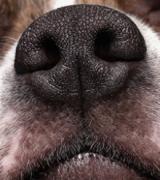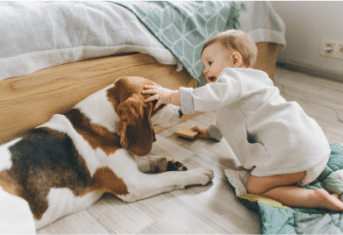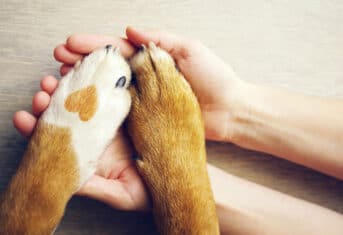How Do Dogs’ Noses Work?

How Do Dogs’ Noses Work?
Dog noses have been in the news lately. Not just because dogs can sniff out a cracker crumb between the sofa cushions or because dogs smell the new bag of bacon strips through the closed pantry door, but because dog noses are being put to work in a very serious way.
For hundreds of years, dogs, like the Bloodhound, have been employed as search and rescue workers to find missing people after being given a whiff of the missing person’s clothing. Now medical sniffer dogs are being trained to diagnose cancer, detect low blood sugar and predict an epileptic seizure. Several features of dogs’ noses make their sense of smell better than our own.
Bigger is Better
Compared to the size of their face, dogs have big noses – well most of them do. And, a bigger nose means they have more area for smell receptors. Inside the nasal passages, the dog has ruffles of tissue called turbinates which increase the surface area that accommodates their smell receptors. Compared to our 5 million, dogs have 300 million receptors on their nasal turbinates. The CT scan on the right shows the ruffles of tissue inside a dog’s nasal passages, and if you watch our video, you can see what turbinates actually look like when a rhinoscopy (nasal endoscopy) is performed.
Bidirectional Smelling
Take a look at your dog’s nose. Notice the nostrils have slits on the sides and the openings are a bit more to the side than directly out front. These features give your dog’s sense of smell directionality. New smells come in from the front and old smells go out through the side slits with exhalation, allowing new smells to constantly bathe the smell receptors.
More Brain Power
Because dogs’ sense of smell is their most highly developed sense, they devote an enormous amount of brain power to the act of smelling. Compared to our rudimentary sense of smell, there is 40 times more canine brain power dedicated to smelling, which allows dogs to differentiate 30,000 to 100,000 different smells. Our repertoire of smells is only 4,000 to 10,000 different smells.
For more about these scent-sitive dogs, watch my interview on Fox5 News with Liz Dahlem.































